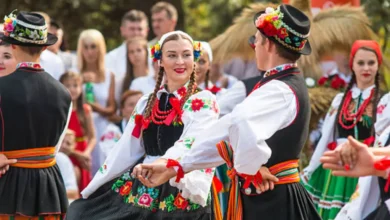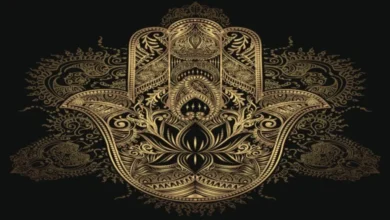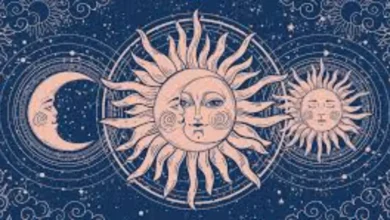Your Shirt Isn’t Just Fabric — It’s a Family Tree
That zigzag on your sleeve?
That red diamond near your collar?
That spiral stitched into your hem?
It’s not “just decoration.”
It’s a map.
A signature.
A prayer.
A declaration:
This is who I am.
This is where I’m from.
These are the hands that made me.
For thousands of years — across deserts, forests, mountains, and coasts — tribal identity has been woven, beaded, dyed, and embroidered into folk costumes.
Not for fashion.
For survival.
For memory.
For belonging.
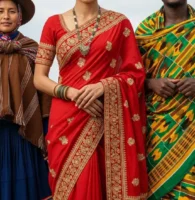 Color Symbolism in Ethnic Clothing: Meanings Behind Vibrant Hues
Color Symbolism in Ethnic Clothing: Meanings Behind Vibrant HuesIn this article, you’ll discover:
- 👕 What tribal identity in folk costumes really means — beyond color and cloth
- 🌍 Real examples from Navajo, Maasai, Sami, Berber, Ukrainian, Kuba, Ainu, Hmong, and global Indigenous traditions
- 🔍 How patterns encode clan, lineage, region, marriage status, spiritual role
- ⚠️ The painful history of erasure — and powerful modern revival
- ✂️ How to appreciate (or create!) identity-based designs ethically
- 🧵 A simple DIY guide to design your own ancestral-inspired pattern — without appropriation
- 💬 Strong, respectful Call to Action — because identity should never be stolen
Let’s begin — one thread at a time.
What Is Tribal Identity in Folk Costumes? (Plain & Simple)
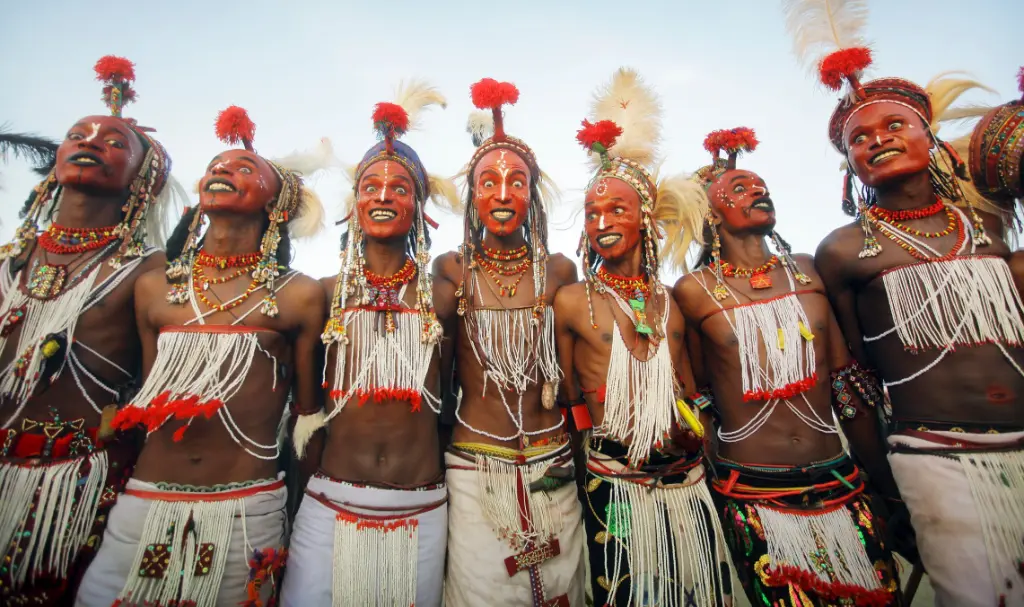
Tribal identity in folk costumes = the use of specific colors, patterns, stitches, beads, or cuts in traditional clothing to show:
- Which tribe or clan you belong to
- Where you’re from (village, mountain, river)
- Your age, marital status, or spiritual role
- Your connection to ancestors + land
Think:
- Navajo women wearing specific rug patterns = their maternal clan
- Maasai beadwork colors = age group + social role
- Ukrainian embroidery motifs = which river valley you were born near
- Sami gákti coat shapes = which fjord family you marry into
- Berber diamond grids = which grandmother’s lineage you carry
These aren’t random.
They’re coded messages. Living archives. Earthbound genealogy.
“We don’t need ID cards. Our sleeves hold our story.”
— Diné (Navajo) weaver
Why Did Tribes Stitch Identity Into Clothing?
Because names fade. Borders shift. Languages vanish.
But thread?
Thread lasts.
Here’s why clothing became the ultimate ID:
1. In a World Without Writing — Cloth Spoke
Before paper. Before printing. Before phones.
If you met someone at market — one glance at their hem told you:
- Are they kin?
- Can they be trusted?
- Should you offer tea or turn away?
Clothing was the original social network.
2. Marriage, Mourning, Initiation — Marked in Thread
Red sash? Newlywed.
Black trim? In mourning.
Blue spiral on left shoulder? Shaman-in-training.
No announcements needed. The cloth announced it all.
3. Land Lives in Pattern
Mountains. Rivers. Animals. Plants.
Stitched into shirts, skirts, sashes — so you never forget where you came from.
“When I wear my mother’s pattern, the land remembers me.”
— Hmong embroiderer, Laos
4. Resistance Against Erasure
When colonizers banned languages, burned villages, stole children —
People hid identity in stitch.
Inside collars. Under linings. In sock cuffs.
Patterns became silent rebellion.
Quick Guide: Tribal Identity Symbols Around the World
| Tribe / Culture | Key Identifier in Costume | What It Tells You |
|---|---|---|
| Navajo (Diné) | Rug pattern on dress or belt | Maternal clan + sacred geography |
| Maasai | Bead color + necklace layers | Age set, marital status, warrior rank |
| Sami | Gákti cut + hat shape | Region, marital status, family origin |
| Berber (Amazigh) | Diamond grid density + color | Ancestral village, female lineage |
| Ukrainian | Embroidery motif placement | River valley, marital status, protection |
| Kuba (Congo) | Raffia cloth named pattern | Royal house, achievement, spiritual role |
| Ainu (Japan) | Attus robe swirl direction | Clan, spirit relationship, ceremonial role |
| Hmong | Reverse appliqué + batik symbols | Village cluster, animist belief, life stage |
| Quechua (Andes) | Hat shape + poncho stripe sequence | Community, altitude zone, weaving guild |
Now — let’s meet each culture up close.
👕 Navajo (Diné): Threads That Hold Clans Together
Navajo identity lives in wool.
Women weave dresses, blankets, sashes with patterns passed down matrilineally.
Each design = a clan signature.
Example: Two Grey Hills Pattern
- Fine black-and-white zigzags
- Represents twin sacred mountains
- Worn by women of Tódích’íí’nii (Bitter Water Clan)
“You can take our sheep. Burn our looms. But you can’t unweave our clans.”
— Lillie Taylor, Navajo weaver
Placement matters:
- Belt patterns = personal power
- Shoulder bands = family responsibility
- Hemline = connection to earth
Modern revival: Young Diné designers print clan patterns on hoodies, skate decks, protest signs — reclaiming identity boldly.
🔴🟡🔵 Maasai: Beads That Speak Your Life Story
To the Maasai of Kenya and Tanzania — beads aren’t accessories.
They’re biography.
Color Code:
- 🔴 Red = bravery, unity, blood
- 🔵 Blue = energy, sky, God (Enkai)
- ⚪ White = peace, milk, purity
- 🟡 Yellow = hospitality, fertility, sun
- 🟢 Green = land, health, nourishment
- 🟤 Brown = earth, humility, elders
Pattern Tells:
- Unmarried girls → large flat necklaces, lots of red
- Married women → layered neck rings, more blue + green
- Warriors → elaborate headdresses, red dominant
- Elders → simpler designs, white + brown
“My neck tells you everything. No words needed.”
— Naserian, Maasai beadworker
Colonialism tried to replace beads with Western dress.
Today? Maasai women run global cooperatives — selling direct, setting prices, teaching youth.
❄️ Sami: Arctic Codes in Wool and Silver
The Sami — Indigenous people of Arctic Scandinavia — wear gákti: wool tunics with coded details.
Every stitch = location. Status. Lineage.
Regional Cut:
- Norway → shorter tunic, wide belt
- Sweden → longer skirt, silver brooches
- Finland → pointed hat, reindeer fur trim
- Russia → bold red + black, brass buttons
Marital Status:
- Single → open neckline, bright ribbons
- Engaged → silver brooch at throat
- Married → closed collar, multiple brooches
Family Origin:
Hat shape + embroidery style = which fjord, which reindeer trail, which ancestor.
“Snow melts. Borders change. But my gákti still says: I am Sami.”
— Inga, Duodji craftswoman
◆◆◆ Berber (Amazigh): Diamonds That Map Female Lineage
Amazigh women of North Africa stitch dense diamond grids onto wool capes (tachelhit).
Each diamond = a female ancestor.
Pattern Density:
- Tight grid → many generations remembered
- Open grid → newer lineage, fewer elders survived
Color Tells:
- Red diamonds → warrior grandmothers
- Blue diamonds → healers, midwives
- Green diamonds → farmers, seed-keepers
- Yellow diamonds → storytellers, poets
Older women teach girls: “Stitch your mother’s diamond here. Your great-aunt’s there. Never skip a generation.”
“They tried to erase our names. So we stitched them into our backs.”
— Fatima-Zahra, Amazigh textile artist
🌾 Ukrainian: Embroidery That Maps Rivers + Kin
Ukrainian vyshyvanka blouses aren’t “just pretty.”
They’re geographic + genealogical records.
Motif = Location:
- Central Ukraine → geometric rhombuses (fields, seeds)
- Carpathians → ram’s horns (mountain spirits)
- Polissia → tree-of-life (forest guardians)
- Steppe → wave patterns (river Dnipro)
Placement = Status:
- Collar fully embroidered → married woman
- Sleeve ends only → unmarried girl
- Red dominant → vitality, protection
- Black dominant → mourning, wisdom
During war, women stitch extra motifs — praying for return, remembrance, resilience.
“When bombs fall, we stitch louder. So the land never forgets our names.”
— Oksana, Lviv embroiderer
■□■ Kuba: Raffia Cloth That Names Your Place in the Kingdom
Kuba people of Congo weave raffia cloth with named patterns — over 200 documented.
Each design = royal house, achievement, spiritual initiation.
Famous Patterns:
- “Leopard’s Tears” → worn by king’s inner circle
- “Chief’s Path” → awarded for community service
- “Rain’s Footprint” → rainmaker priestesses only
- “Python’s Skin” → healers, diviners
Patterns are never copied. Each is “owned” by a lineage.
Modern Kuba artists trademark designs — stopping fast fashion theft.
“This pattern isn’t mine to sell. It belongs to my grandfather’s grandfather.”
— Mbala, Kuba weaver
🌀 Ainu: Swirls That Whisper to Spirits
Ainu of Hokkaido, Japan, wear attus robes — woven from elm bark, embroidered with swirling river patterns.
Direction of swirl = clan + spirit relationship.
Left-Swirling Spirals →
- For ceremonies honoring bear spirits
- Worn by ritual leaders
- Invokes gentle guidance
Right-Swirling Spirals →
- For hunting, fishing, travel
- Worn by providers
- Invokes protection + abundance
Colonial Japan banned Ainu language, dress, rituals.
Today? Youth revive attus — stitching swirls into streetwear, music videos, graduation gowns.
“They called us primitive. Now our swirls walk runways. Our rivers still flow.”
— Mayu, Ainu designer
🧵 Hmong: Story Cloth That Survived War
Hmong people of Laos, Vietnam, China escaped genocide by stitching their history into cloth.
Called paj ntaub (“flower cloth”) — these are wearable archives.
Reverse Appliqué + Batik Symbols:
- House with curved roof → ancestral home
- Elephant → strength during escape
- Spiral path → refugee journey
- Nine-pointed star → hope in diaspora
Worn during New Year, weddings, funerals — to remember what textbooks erased.
“No country wanted us. So we carried our country in thread.”
— Mai, Hmong-American artist
🏔️ Quechua: Hats That Measure Altitude + Allegiance
In the Andes, your hat tells strangers:
- Which village you’re from
- How high your fields sit
- Which weaving guild raised you
Hat Shape:
- Wide-brimmed, flat top → Sacred Valley
- Tall, cylindrical → High Altiplano
- Felt with earflaps → Northern Peru
- Braided wool → Southern Bolivia
Poncho Stripes:
Sequence of colors = community code.
Example:
Red-Black-White-Green → Community of Chinchero
Only members wear this order.
Tourists often copy stripes — unknowingly wearing someone else’s identity.
“That’s not a fashion statement. That’s my grandfather’s name.”
— Rosa, Awamaki weaver
Colonialism Tried to Erase These Identities. Communities Stitched Back Harder.
Governments banned native dress.
Missionaries burned ceremonial garments.
Boarding schools cut children’s hair, forced Western uniforms.
But the people?
They:
- Hid patterns in hems, linings, sock cuffs
- Used muted threads to avoid detection
- Whispered meanings to grandchildren
- Revived traditions after wars, genocides, dictatorships
Today:
- Navajo teens wear clan hoodies to school
- Maasai women trademark bead patterns
- Ukrainian soldiers wear vyshyvankas under armor
- Sami designers win global fashion awards
- Hmong story cloths hang in Smithsonian
“You can ban our cloth. But you can’t ban our memory.”
— Winona LaDuke, Anishinaabe activist
How to Wear Tribal Identity Patterns — The Right Way
Yes, you can admire them.
But please — never claim them as your own.
✅ DO:
- Learn the meaning behind the pattern before admiring it
- Buy directly from tribal artists — not Amazon, Shein, or Etsy resellers
- Ask if a design is restricted (many are for community members only)
- Credit the culture, region, artist — always
- Wear with reverence — not as costume, trend, or “inspo”
❌ DON’T:
- Buy mass-produced “tribal print” shirts with no cultural context
- Wear sacred ceremonial items (e.g., Sami gákti, Kuba royal patterns) as festival wear
- Say “I feel connected to this tribe” without lineage or invitation
- Ignore requests from communities asking you not to replicate their identity markers
“Appreciation respects boundaries. Appropriation ignores them.”
— Dr. Adrienne Keene, Cherokee Nation, @nativeappropriations
Create Your Own Ancestral-Inspired Pattern (Ethically!)
Want to honor your own roots — without copying someone else’s sacred design?
Here’s how — respectfully, personally, powerfully.
Step 1: Interview an Elder (or Your Inner Elder)
Ask:
- What landscape shaped our family? (Mountains? Coast? Desert?)
- What animal kept showing up in stories?
- What color did Grandma always wear?
- What object survived generations? (Teapot? Quilt? Spoon?)
Write down 3 answers.
Example:
Coastal Maine. Lobster boats. Navy blue aprons. Granite steps.
Step 2: Turn Memory Into Shape
Simplify:
- Waves → zigzag
- Boats → triangle
- Apron → diamond
- Granite → grid
Keep it abstract. Make it yours.
Step 3: Name It. Bless It. Stitch It.
Call it “Granite Tide Pattern” or “Apron of the Salt Wind.”
Stitch it on a journal. Paint it on your wall. Print it on a tote.
Say aloud: “This is mine. Made with memory. Blessed by place.”
“Your ancestors didn’t cross oceans so you could wear someone else’s story. They crossed so you could tell yours.”
— Toko-pa Turner
Where to Buy Ethically Made Tribal Identity Wear
| Culture | Ethical Source | What They Sell | Link |
|---|---|---|---|
| Navajo (Diné) | Toadlena Trading Post | Clan-specific woven wear | toadlenachapterhouse.com |
| Maasai | Masaai Women Artisans | Age-set beadwork, ethical jewelry | masaaiwomenartisans.org |
| Sami | Duodji Sámi Crafts | Region-coded gákti, silverwork | duodji.org |
| Berber | Anou Cooperative | Lineage diamond wool capes | shopanou.com |
| Ukrainian | Vyshyvanka Day Project | River-valley embroidered shirts | vyshyvankaday.org |
| Kuba | Congo Fabric Archive | Named-pattern raffia modern wear | congoarchive.art |
| Ainu | Ainu Craft Official Store | Clan-swirl attus robes | ainu-craft.jp |
| Hmong | Hmong Arts Collaborative | Story cloth apparel, home decor | hmongarts.org |
| Quechua | Awamaki | Community-striped ponchos, hats | awamaki.org |
⚠️ Avoid mass retailers. Support living artists directly.
Why This Matters More Than Ever
We live in a world of lost roots.
Algorithms. Apartments. Anonymity.
Tribal identity in folk costumes offers something radical:
Belonging. Memory. Place.
When you wear your grandmother’s pattern — you say: I remember.
When you stitch your village’s symbol — you say: I am still here.
When you honor another’s design — you say: Your story matters.
These patterns are anchors.
They whisper:
You are not alone.
You come from somewhere.
You carry others with you.
“In a rootless world, thread becomes lifeline.”
— Balkan elder
Your Turn: Know Your Roots. Honor Others’. Stitch With Care.
You don’t need a ceremonial robe to carry this wisdom.
Start small. Start true.
👕 1. Pick One Pattern. Learn Its Story.
Read a book. Watch a doc. Follow an artist.
📚 Try:
- Patterns of the People (Native American)
- African Textiles Today by Chris Spring
- The Secret Language of Cloth by Dolores Kesler
- Braiding Sweetgrass by Robin Wall Kimmerer (for land-based identity)
🧵 2. Support Real Artists
Buy direct. Pay fairly. Share their work.
Search: “[Culture] + textile artist + Instagram”
Follow: #FolkIdentity #WearYourRoots #AncestralThreads
✏️ 3. Make Your Own Symbol
Use the DIY guide above.
Name it. Bless it. Wear it proudly — as YOUR story.
🗣️ 4. Speak Up
See sacred identity patterns sold as “boho chic”? Gently correct.
See elders ignored? Amplify them.
See cultural erasure? Donate. Volunteer. Educate.
🌱 5. Give Back
Donate to Indigenous land-back funds.
Plant native species tied to your ancestry.
Clean local rivers — water carries memory.
Teach a child one ancestral symbol — and its true origin.
“Honor the hands that wove the first maps. Then weave your own.”
— Winona LaDuke
Final Thought: You Are a Living Pattern
Next time you see a diamond stitched on a sleeve, a zigzag on a cuff, a spiral on a shawl — pause.
That’s not “just fabric.”
That’s a grandmother tracing mountain paths with thread.
A child learning which river sings their name.
A rebel reviving forbidden lines after war.
Tribal identity in folk costumes is alive.
Wear yours with love. Honor others’ with care. Pass them on — correctly.
And remember:
You, too, are a pattern.
Woven from place.
Colored by story.
Stitched with memory.
Wear that truth boldly.
💌 Loved this? Share it with someone reclaiming roots — gently, wisely, beautifully.
🧵 Follow #FolkIdentity or #WearYourRoots on Instagram.
✏️ Grab thread. Talk to elders. Begin your pattern.
Written with deep respect for all who turned thread into testimony. May we wear their wisdom lightly, carry it deeply, and return it generously — to the hands, hearts, and lands that birthed it.

